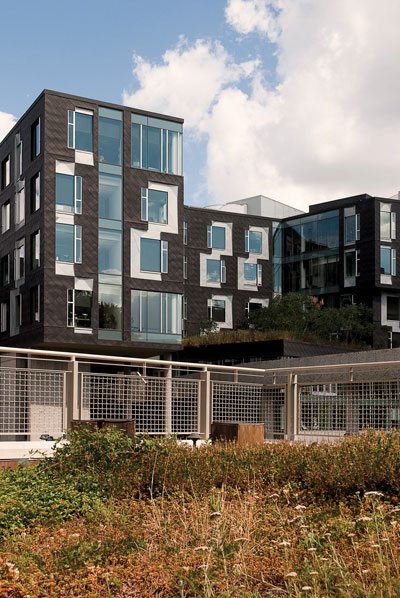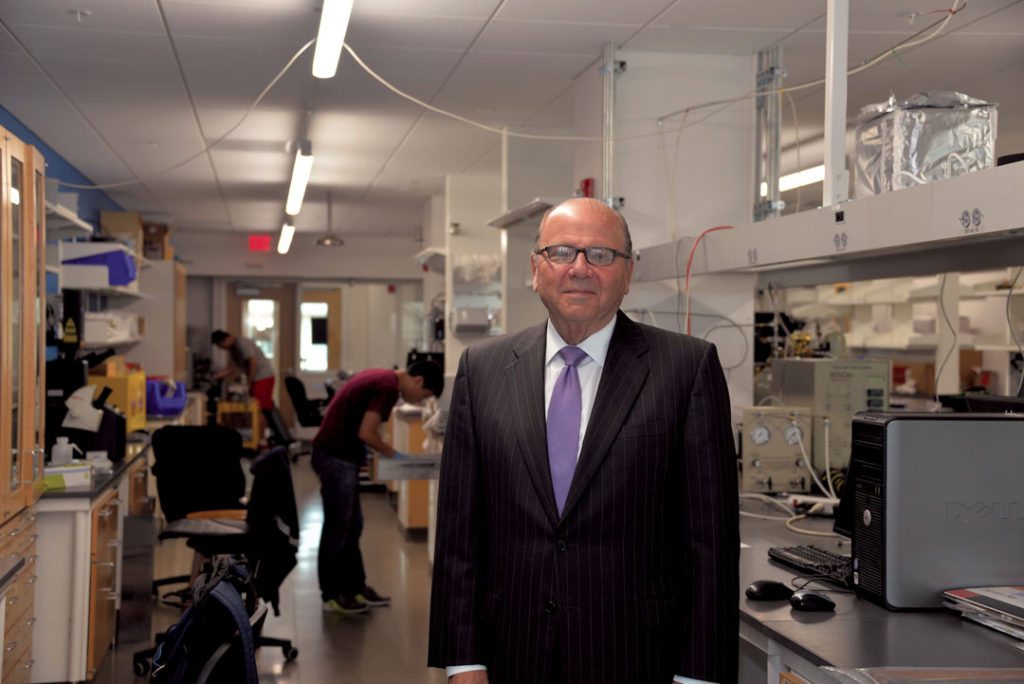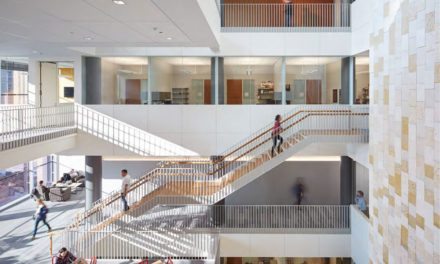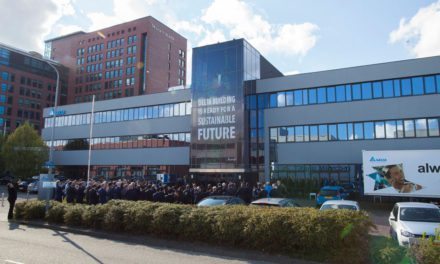Carnegie Mellon University (CMU) is an internationally acclaimed and respected education, research, innovation, and sustainability institution. The leadership, passion, and vision of CMU’s extremely dedicated administrators, faculty, students, and leaders have elevated the university to a preeminent environmental position over the past several decades through the prioritization and promotion of energy efficiency and green practices, education, and research.
As CMU’s third-longest President and current Director of the Wilton E. Scott Institute for Energy Innovation, Dr. Jared L. Cohon has been a devoted catalyst for the university’s sustainability policies, practices, and successes.
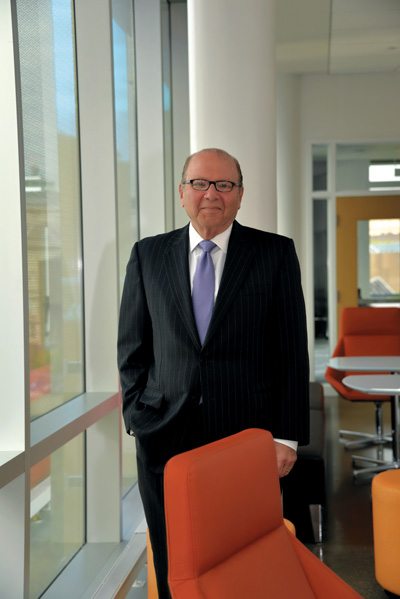
As CMU’s third-longest President and current Director of the Wilton E. Scott Institute for Energy Innovation, Dr. Jared L. Cohon has been a devoted catalyst for the university’s sustainability policies, practices, and successes.
From energy efficiency and conservation to renewable energy, green buildings, sustainable product research, and much more, Dr. Cohon emphasized environmental sustainability from the start of his CMU presidency in 1997. He directed the university to reduce dining hall waste by switching to washable dinnerware and banning plastics, unveiled a new central recycling education center, and created a full-time environmental coordinator staff position.
In 1996, a grassroots task force of faculty, staff, and students met on their lunch break throughout the summer to compile a report on the campus’ environmental practices to share with the incoming president. Barbara Kviz, CMU’s environmental coordinator in Facilities Management Services, recalls the refreshing inspiration and vision that Dr. Cohon brought from the very beginning. “It could have been just another report on the shelf if it were not for Dr. Cohon,” she recalled. “He came to us with an environmental sensibility and interest in campus practices, as well as environmental education and research.” That grassroots task force, also supported by The Heinz Endowments, became CMU’s Green Practices Committee that, 20 years later, still meets regularly to develop university practices that improve environmental quality.
Over the last two decades, CMU has advanced its green practices, education, and research by leaps and bounds; environmental innovation has become an integral part of the university’s culture, curriculum, and practices. Under Dr. Cohon’s leadership, it offered its first environmental ethics course, built the first LEED-certified dormitory in the world, and became the first institution in the nation to have the largest fraction of its total energy come from green power.
As one of his first orders of business, President Cohon initiated a university-wide strategic planning effort, which included a focus on environmental education and research. Just three years into his tenure (2001), CMU committed to purchasing 5% of its electricity from wind power sources. At the time, this was the largest retail purchase of wind power in the United States. In 2010, CMU received the EPA’s Green Power Leadership Award, recognizing the institution as a leading purchaser of renewable energy in the U.S. Two years later, CMU purchased 116,000 megawatt hours of renewable energy credits to enable 100% of the university’s energy usage to come from renewable energy sources. This remarkable achievement offset nearly 80,000 metric tons of carbon dioxide emissions, equal to 10,000 U.S. homes or over 15,000 passenger vehicles. Since 2011, 100% of the university’s electricity has come from renewable energy.
Following their early electricity purchasing successes, in 2004 CMU formed the Steinbrenner Institute for Environmental Education and Research to coordinate and advance research, education, and practices around environmental quality and sustainability to change the way the world thinks and acts about the environment.
Dr. David Dzombak, department head of Civil and Environmental Engineering at CMU, chaired both the Green Practices Committee and Steinbrenner Institute. He champions Dr. Cohon for his unhesitant and eager support of the committee’s recommendations to both incorporate environmental education throughout the campus and to open it as a laboratory for green practice studies in various realms of campus life. “The green practice achievements and leadership of Carnegie Mellon are attributable to the interest, support, and leadership of President Jared Cohon,” Dzombak said. “His encouragement and support of the engagement with green practice efforts of campus academic and administrative groups unleashed a tremendous amount of creativity and unique student-staff-faculty collaboration that enabled Carnegie Mellon to achieve its goals.”
Creating Standards and Vision
In his 16 years as CMU’s president, Dr. Cohon drove the university’s commitment to pursue LEED Silver certification for all new construction and significant renovations on campus – and LEED for Commercial Interiors where applicable. Today, Carnegie Mellon boasts 14 green buildings, 12 of which are LEED-certified. These spaces incorporate high-quality ventilation, natural daylight, salvaged materials, indoor air quality plans and sensors, solar panels, off-site renewable energy credits, and plenty of accessible green space (including more than 35,500 square feet of green roofs). From Stever House’s 2003 designation as the first LEED-certified residence hall in the world to ensuring external views in all public spaces, CMU continues to provide high-quality learning environments that maximize efficiency, minimize negative environmental impact, and provide tangible, interactive models of sustainability, mindfulness, innovation, and leadership.
CMU also boasts 20 research centers that have come to fruition as a result of Dr. Cohon’s vision, priorities, and guidance. From the Center for Building Performance and Diagnostics (the first center in the nation to focus on investigating the impact of advanced technology on the physical, environmental, and social environments) to the Center for Sustainable Engineering, Center for Atmospheric Particle Studies, and Center of Climate and Energy Decision Making, Dr. Cohon’s leadership and foresight continue to reverberate through CMU’s work after his presidency.
A New Legacy Chapter
Dr. Cohon himself remains very committed to advancing CMU’s goals through the university’s newest research center as Director of the Wilton E. Scott Institute for Energy Innovation. In his newest role, he is leading a pivotal research and policy-centric effort to help the world transition to a sustainable energy future by focusing on the research, development, and demonstration of technologies, systems, and policies required to achieve that vision. Under Dr. Cohon’s direction, the Scott Institute concentrates on using and delivering energy more efficiently; expanding energy sources in clean, reliable, affordable, and sustainable ways; and creating innovations in energy technologies, regulations, and policies.
With a lifetime of green building and sustainability achievements, Green Building Alliance is thrilled to present Dr. Jared L. Cohon with our 2016 Legacy Award, both honoring and thanking him for his work, dedication, and passion to interlacing and prioritizing green building, efficiency, sustainability, and education at Carnegie Mellon University, in the Pittsburgh region, and around the world.
This article was originally published in Viride, a new publication of the Green Building Alliance. PRISM extends its gratitude to Viride and the GBA for sharing this article with PRISM’s readers.
About Viride
The annual publication showcases the projects, people, and perspectives that are leading our region’s innovative green building industry.
In Latin, “viride” (pronounced vĭrĭdā or VEER-uh-day) means fresh, green, blooming, and youthful. At Green Building Alliance, as we strive to advance healthy, high performing, and green buildings and places that are environmentally responsible, socially just, and economically viable. Thus, naming our annual magazine Viride seemed like a good way to designate how we and our many stakeholders work with passion, enthusiasm, and goals that help our region grow. Though GBA is approaching our silver anniversary as an organization, we still feel youthful and excited by the green building and sustainable placemaking projects and potential the future holds – and we are proud to have been helping regional and national leaders and partners water the seeds of sustainability we’ve been planting together for the past 23 years.
If you’d like to receive a copy of Viride, or multiple copies to share with your colleagues and friends, let us know!


